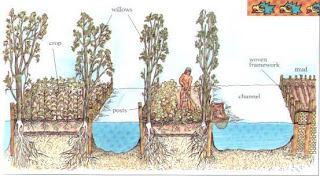As you know, aquaponics combines agricultural crops and fish symbiosis. Before you can understand how aquaponics works, it is important to understand why it is so essential. By combining aquaculture and hydroponics, it eliminates most (if not all) of the problems with both methods.
One of the main problems of aquaculture is that when the culture of fish and other marine animals, large amounts of waste (sewage) is produced because it is a closed system. This is dangerous and toxic for fish to live in. The result is polluted water and the fish are not safe to eat. So, therefore, you have to constantly change out of the water every day, which means that wastewater. Water to get rid of can be harmful to fish, but it is beneficial for other purposes you will discover.
The problem with hydroponics is that it requires expensive nutrients to feed the plants. The money spent to feed the plants, it is often difficult for the average person to maintain over a long period of time. There are some DIY recipes hydroponic nutrients, but it may be time
consuming to create. In addition, you should regularly clean your system. It can be difficult to find ways to always have all the wastewater.
Aquaponics introduces a solution to these problems, while providing a whole new way of cultivating aquatic animals and plants at the same time.
With aquaponics, sewage and effluents are used to provide nutrients for the plants used in the process. In terms of lamentation, fish fertilize plants. This allows the aquaponics system to remain in a closed system, without the need to constantly change out of the water and also allows operation with minimal amounts of water.
 |
| Aquaponics Diagram Shows How Aquaponics System Work! |
An aquaponics system consists of three main elements:
- Fish
- Plants
- Bacteria
Thereafter, we will discuss each of these elements, but do not forget that these are the three essential elements of any aquaponics system. With fish feed, they produce waste and food scraps that accumulates at the bottom of the tanks. The bacteria convert the wastewater nutrients for plants to grow and thrive. As you harvest the plants, the water becomes clean again and the process repeats.
The image above shows the basic process of a simple aquaponics system. Not shown is the series of pipes and fittings. This is to show you the flow of nutrients and the process of how an aquaponics system works.To the left is a garden bed where the plants are harvested. The bed is filled with gravel or clay pebbles. On the right is a fish tank. The water passes fish tank in the bed of culture. As the water seeps through the bed of the culture and roots of the plants, the plants get all the nutrients they need to grow and thus cleans the waste ammonia. Then water is poured into the tank clean and safe for the fish to swim in. The process of converting the ammonia produced by the fish nitrate in plants is known as the nitrogen cycle.
As you will see a little later in this e-book, there are several variations of this method. Elements such as you fill the bed of culture, that you place your plants inside and others can all be changed and modified to suit your needs. Again, this is what makes it so popular and easy to start aquaponics.

